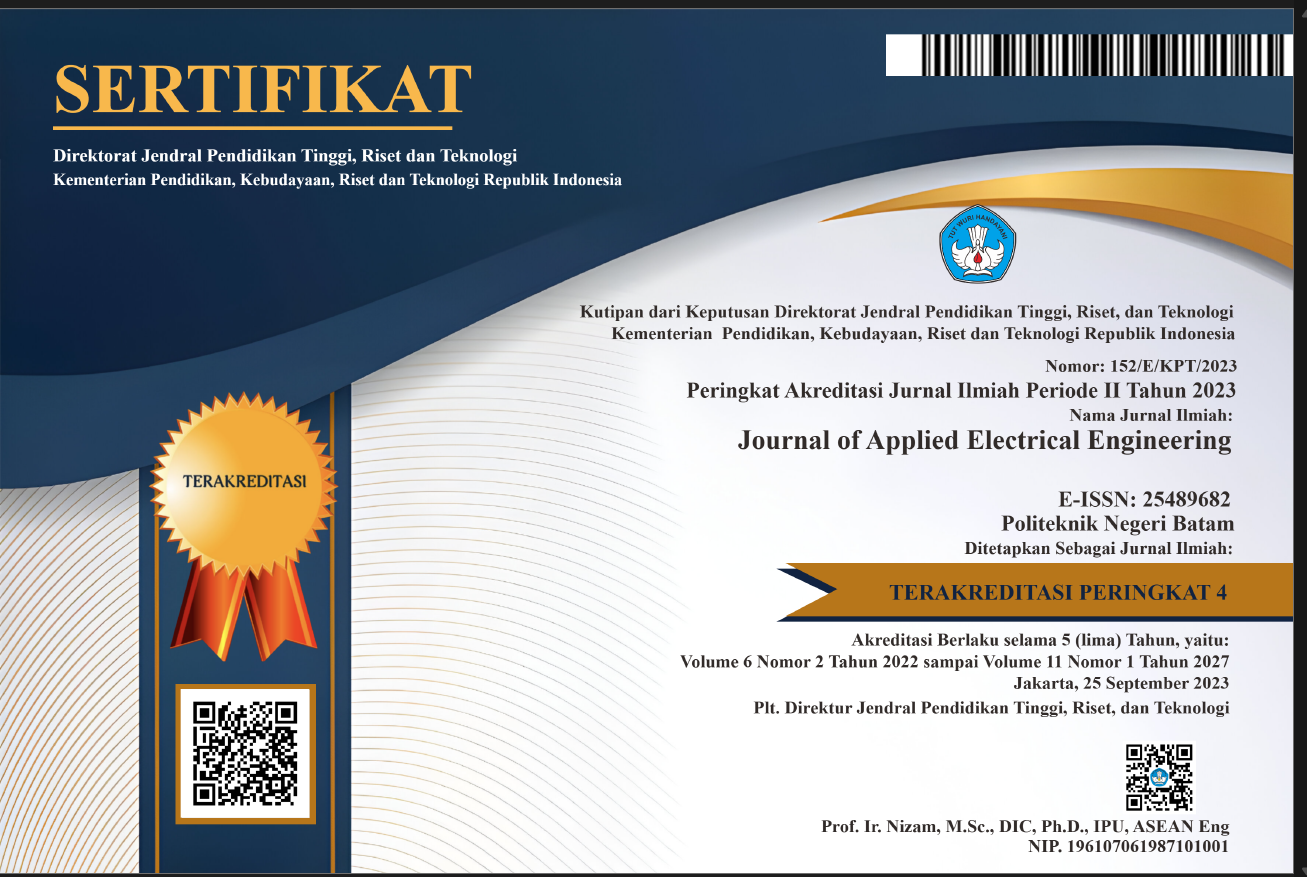Klasifikasi Gerakan Jatuh Berbasis Accelerometer dan Gyroscope Menggunakan K-Nearest Neighbors
DOI:
https://doi.org/10.30871/jaee.v4i2.1300Keywords:
Klasifikasi gerakan, Wavelet, K-nearest neighborsAbstract
Permasalahan utama pada penelitian ini merujuk kepada semakin menurunnya daya tahan tubuh lanjut usia (lansia). Hal ini membutuhkan sistem monitoring aktivitas lansia secara real time. Untuk mendeteksi kegiatan para lansia, dirancang sebuah perangkat monitoring dengan accelerometer 3-sumbu dan gyroscope 3-sumbu. Data sensor diperoleh dari lima partisipan. Setiap partisipan melakukan lima gerakan yaitu terjatuh, duduk, tidur, rukuk dan sujud. Gerakan yang dipilih adalah gerakan yang menyerupai gerakan jatuh. Total data yang diperoleh dari partisipan adalah 75 data yang terbagi menjadi training data dan testing data. Penelitian ini menggunakan metode transformasi Wavelet untuk mengenali fitur dari gerakan. Untuk pengklasifikasian setiap gerakan, digunakan metode K-nearest neighbors (KNN). Hasil klasifikasi gerakan menggunakan lima kelas menghasilkan nilai root mean square sebesar 0.0074 dengan akurasi 100%.
Downloads
References
Pusat Data dan Informasi - Kementerian Kesehatan Republik Indonesia, "Analisis Lansia di Indonesia 2017." [Online]. Available: https://pusdatin.kemkes.go.id/article/view/18012600001/analisis-lansia-di-indonesia-2017.html. [Accessed: 03-Nov-2020].
A. Z. Rakhman, L. E. Nugroho, Widyawan, and Kurnianingsih, "Fall detection system using accelerometer and gyroscope based on smartphone," in 2014 1st International Conference on Information Technology, Computer, and Electrical Engineering: Green Technology and Its Applications for a Better Future, ICITACEE 2014 - Proceedings, 2015, pp. 99"“104.
S. D. Tsani and I. H. Mulyadi, "Sistem Pendeteksi Jatuh Wearable untuk Lanjut Usia Menggunakan Accelerometer dan Gyroscope," J. Appl. Electr. Eng., vol. 3, no. 2, pp. 44"“48, 2019.
R. Espinosa, H. Ponce, S. Gutiérrez, L. MartÃnez-Villaseñor, J. Brieva, and E. Moya-Albor, "A vision-based approach for fall detection using multiple cameras and convolutional neural networks: A case study using the UP-Fall detection dataset," Comput. Biol. Med., vol. 115, p. 103520, Dec. 2019.
D. Sripathi, "Efficient Implementations of Discrete Wavelet Transforms Using FPGAs," 2003.
O. Kramer, "K-Nearest Neighbors," Springer, Berlin, Heidelberg, 2013, pp. 13"“23.
Downloads
Published
How to Cite
Issue
Section
License
Authors who publish with this journal agree to the following terms:
- Authors retain copyright and grant the journal right of first publication with the work simultaneously licensed under a Creative Commons Attribution License (Attribution-ShareAlike 4.0 International (CC BY-SA 4.0) ) that allows others to share the work with an acknowledgment of the work's authorship and initial publication in this journal.
- Authors are able to enter into separate, additional contractual arrangements for the non-exclusive distribution of the journal's published version of the work (e.g., post it to an institutional repository or publish it in a book), with an acknowledgment of its initial publication in this journal.
- Authors are permitted and encouraged to post their work online (e.g., in institutional repositories or on their website) prior to and during the submission process, as it can lead to productive exchanges, as well as earlier and greater citation of published work (See The Effect of Open Access).
Open Access Policy
This journal provides immediate open access to its content on the principle that making research freely available to the public supports a greater global exchange of knowledge. Its free availability on the public internet, permitting any users to read, download, copy, distribute, print, search, or link to the full texts of these articles, crawl them for indexing, pass them as data to software, or use them for any other lawful purpose, without financial, legal, or technical barriers other than those inseparable from gaining access to the internet itself.













